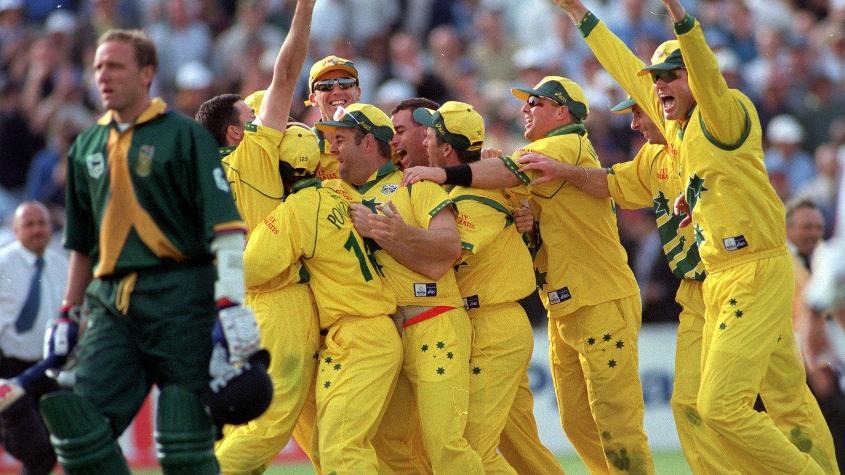
It seems like it was only yesterday that we were left with no nails to bite, but it has been more than 24 years since that eventful day at Edgbaston, Birmingham, where Australia tied with South Africa in a Cricket World Cup semi-final and sent us scurrying to check the playing conditions to see which of the teams had made it to the final.
As Australia and South Africa square off in the ICC Cricket World Cup at the Ekana Stadium in Lucknow on Thursday, it is hard for the mind not to recall a dramatic freezeframe from all those years ago. In the years since that day in June 1999, South Africa have engaged Australia in some amazing one-day international battles, but this one will remain as one of the greatest in history.
More than the thrilling cricket that made us write and rewrite our copy, racing as we were against sharp newspaper deadlines back home, I will remember that many of us reached out to our copies of the playing conditions to see how the tie would be resolved. The Super Over was alien to international cricket then.
Australia made it to the title contest at Lord’s because they had finished second in the Super Six stage, a rung higher than South Africa. It was a hard lesson learnt – read all the applicable rules before the start of an event so that one does not have to reach out to the rule books at the eleventh hour. Having said that, the contest itself was riveting and unforgettable.
If you had watched it back then, you do not need to search for images or YouTube videos to recall Lance Klusener, South Africa’s left-hand dasher, had raced out of the frame. The image of a despondent and heart-broken Allan Donald, separated from his bat, contrasted sharply with a sea of relieved Australians, in their yellow outfits, converging in the middle to celebrate the jailbreak.
Indeed, just the drama of the last over – and its aftermath – is worthy of a book in itself. Klusener cracked two successive drives through the covers for fours to tie the scores with four deliveries left. Donald set off for an impossible run and escaped being run out when Darren Lehmann’s throw missed the stumps. And then it was Klusener’s turn to set off for an improbable run.
As Klusener – what a World Cup campaign he had had with his six-hitting! – nudged the ball to mid-off and charged down the track, Donald turned to look at the ball before heeding his partner’s call to try and make it to the other end. Mark Waugh, Damien Fleming, the bowler, and Adam Gilchrist, the wicketkeeper, combined to run Donald out.
Bob Woolmer, then South Africa coach, and Hansie Cronje, the captain, had kickstarted that World Cup with a controversy – using microphones and earpieces to communicate with one another during the opening game against India at Hove before the ICC banned the use of such transmission devices. Their team went out of the reckoning for a place in the final.
It was a pity because South Africa had done all it could to pull the rug from under Australia’s feet with intense cricket. Shaun Pollock and Donald were the bowling spearheads who restricted Australia to a small score, despite a typical Steve Waugh-Michael Bevan fifth-wicket partnership.
It was more distressing for their supporters because South Africa had knocked off nearly 50 runs without loss and looked set to make it to the final. Shane Warne produced his characteristic wizardry, claiming three victims to send South Africa spiralling before Jacques Kallis’s fine all-round skills and Jonty Rhodes clawed their team back. Steve Waugh fell back on Warne to dismiss Kallis.
With Klusener at the crease, South Africa were fancied to secure victory. He walked in with 39 to get in just over five overs and though Australia were known to snap at the heels of the opposition, Rhodes and he were expected to see the side home. That was not to happen as the lower half crumbled under pressure.
The C word came to be associated with South Africa, but it was Donald who bore the brunt. He was needled by fans around the world and has admitted that he needed therapy to come to terms with an image implanted in his own mind – one of a little girl weeping after the tie guaranteed Australia a coach ride to Lord’s and forced South Africa to head home.
The cacophony of emotions that we were subject to as several layers of drama unfolded before our eyes was so raw that it does not take much to recall it in vivid detail, making the heartbeat rise and fall with each wave of excitement. But each time Australia and South Africa come face to face in a Cricket World Cup battle, these emotions come flooding back. Effortlessly.



